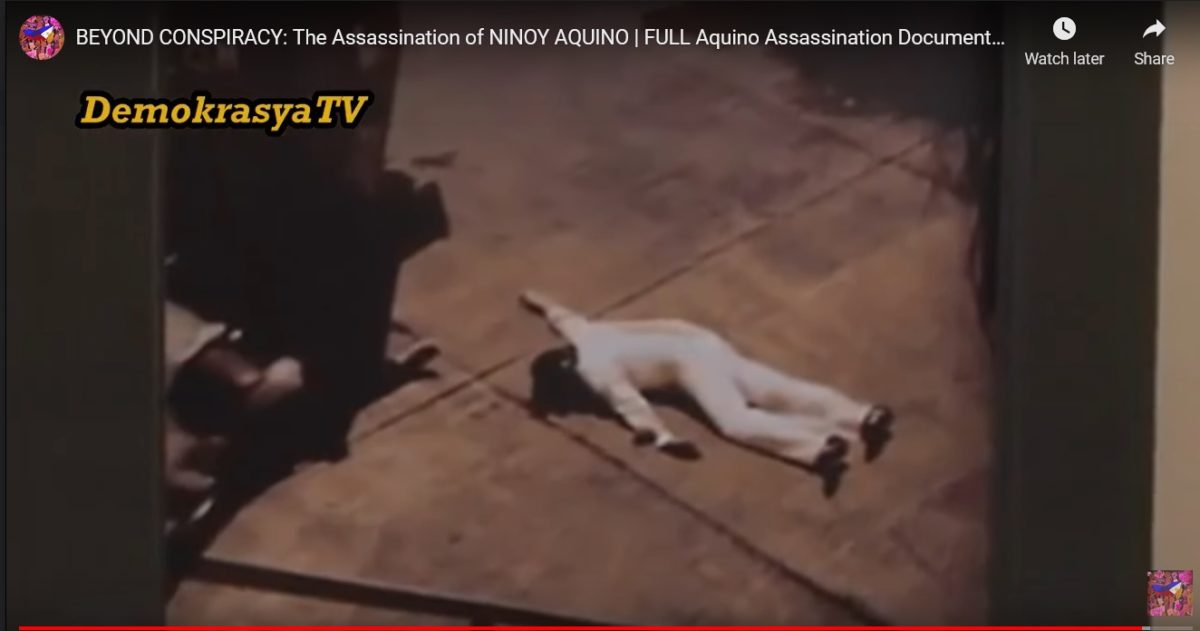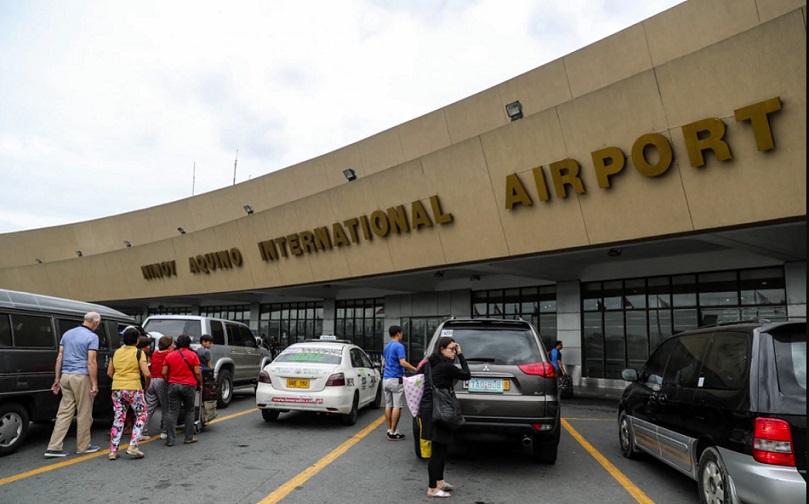In 1992, Imelda Marcos ran for the country’s top government position in the first presidential elections following the term of Cory Aquino.
Knowing that the late dictator’s wife would campaign in my home city of Cagayan de Oro in Mindanao, I resolved to be at her rally and hear her talk. Not that I was a fan; far from it.
In the 1986 snap presidential elections, I had also gone to the campaign sortie of Imelda’s husband, Ferdinand Sr. I did not regret it. There, I saw how ill he was as bodyguards had to prop him up on stage. The booming timbre of his voice was gone. After the rally ended and the hakot crowd had left, I saw a portable toilet behind the stage in the deserted venue.
The rumors were true: the dictator was incontinent. In an age when news was filtered, this was validation.
Imelda’s 1992 rally was conveniently located from our old house which was just a few steps away from the plaza. I waited for her to arrive. When she got off her car, I jostled my way through the crowd that surrounded her. I was able to inch myself just right behind her as she was about to climb the stairs to the stage. Pressing myself closer behind her, I asked: “Who killed Ninoy?”
Imelda turned her head towards me, stopped, and then said rather tearfully, “I’d like to know too.”
I did not expect the melodrama. Was I naïve? Of course I was. But more than hoping for a confession about the brutal killing of former senator Benigno Aquino, Jr. who was the arch political rival of her late husband, I wanted to test Imelda’s spontaneous reaction to a question that she most likely did not expect at all in that rally of screaming Marcos loyalists.
There are two discourses in a dictatorship: the muted voices of the subjects of a tyrant’s immense power and those of the entitled who benefit from it. Imelda, of course, represented the latter. It was an entitlement that allowed the privileged to craft their own narrative, however incredible, for the masses to digest without question.
Those in this elite group continue to lie today because it is the most convenient recourse when one harks back to that period when they wallowed in the power and privileges that benefitted them tremendously.
But why ask Imelda who assassinated Ninoy nine years prior?
I consciously witnessed the tumultuous days of August 1983 when the nation rose in protest of the cold-bloodied murder of Ninoy Aquino and eventually swept his wife, Cory, to power. When the Mr&Ms tabloid of the mosquito press came out with its weekly blow-by-blow coverage of the Agrava Commission that investigated the killing, our family gobbled up copies. These became our gratifying source of truthful news after living through a period of crony newspapers which were heavily censored by the Marcos black Marias in media.
“Who killed Ninoy?” is a question that the Marcos couple’s eldest daughter, Imee, now wants to resurrect in her current gameplan of revisioning history. She has already done it about the family’s escape to Hawaii (“It was a very dreary night,” she said in one of her YouTube videos). And now she wants to address two of the most harrowing turning points that forever changed what could have been the Marcos family’s more honorable place in history: their ouster from power and the world’s excoriation as a result of the Ninoy Aquino assassination.
Today, trolls powered by Marcos-sponsored narratives drive home their point: how come the two Aquino presidencies never resolved the mystery of who masterminded Ninoy’s murder? It is a question that is not valid: Cory did not want it said that the case was resolved because of her presidential persuasions.
A retrospective documentary, produced in very careful detachment some years after Cory’s presidency, weighed all the available evidence to come up with the most plausible version of who was behind the crime.
Produced by the Worldwide Foundation for People Power in 2008, Beyond Conspiracy was hosted by news anchor Tina Monzon Palma to commemorate the 25th anniversary of the Ninoy assassination. Readers who watch this for the first time will be disappointed about its conclusion: that there was not one mastermind but several people acting in conspiracy.
Beyond Conspiracy posits its hypothesis from three basic points:
Motive and gain: Why was Ninoy killed and who stood to benefit from his death?
Practical ability to commit the crime: Who had the means and best opportunity to carry out the assassination?
The third question springs from obvious attempts to conceal the true nature of the crime: Who had the power to cover up what actually happened on the tarmac on August 21, 1983?
The documentary then narrowed the list of possible principals: Ferdinand E. Marcos himself, Imelda Marcos and the Romualdez family, former Armed Forces chief of staff Fabian Ver, and Eduardo “Danding” Cojuangco “because he was the most powerful and the most trusted of all the cronies; FM appointed him member of the Executive Committee tasked to run the country after FM’s death; He was a reserved colonel in the Philippine Air Force, the mother unit of the Aviation Security Command (Avsecom) assigned to secure Ninoy upon his arrival.”
The late Danding Cojuangco was an estranged cousin of Cory, whose maiden name was Cojuangco.
The list of possible suspects in the documentary does not include Juan Ponce Enrile, saying that the former defense secretary was “gradually eased out because Ver was reporting directly to Marcos.” It had a similar explanation for excluding Fidel V. Ramos: “The chain of command was bypassed, since Ver was sitting in Malacañang next to the president.”
As for means and opportunity, more than a thousand soldiers were deployed at the Manila International Airport on August 21, 1983. The Armed Forces of the Philippines had in fact devised a detailed game plan ostensibly to protect Ninoy: Oplan Balikbayan. Based on testimonies in the Agrava Commission hearings, Avsecom chief Luther Custodio prepared the plan on Ver’s instructions. Oplan Balikbayan had several Implans, including Implan Alalay which consisted of a boarding party to fetch Ninoy from the plane that he flew in.
Footages of the boarding party searching for Ninoy inside the aircraft are familiar. When the team finally recognized the former senator and told him to come with them, one touched his back. It was to confirm if the man who was about to be slain was wearing a bulletproof vest. He was.
Everything was well calculated.
There were four eyewitnesses to the murder. Defense lawyers, of course, tried to demolish their testimonies, even gaslighting their integrity. A passenger on the China Airlines flight, Rebecca Quijano, saw the killing from the window of the first class section.
“I saw the stairway going down to the tarmac. I saw Ninoy going down with three soldiers. After a few steps, I saw (CIC Rogelio) Moreno point a gun at Ninoy and fire,” she testified in court. Moreno was found positive of powder burns.
Ramon Balang, a ground engineer of Philippine Airlines, had just completed his visual check of the China Airlines plane. On his way to a concrete post to get his worksheet, he noticed people going down the stairway. Balang then heard a shot, looked towards the stairs and “saw Aquino’s body falling towards the tarmac.”
At the same time, Balang saw a man in blue coveralls, later identified as Rolando Galman, speaking animatedly with soldiers. Galman fell on his back after a burst of gunfire. Balang ran for cover.
Jessie Barcelona was also a PAL employee tasked to service the equipment of incoming planes. As he was driving a tow tractor, Barcelona saw a man in white (identified as Ninoy) flanked by two soldiers going down on the bridge stairway. In the next instant, he saw another soldier behind Ninoy pointing a gun at his nape and then firing a shot. Ninoy lurched downwards towards the tarmac while his soldier escorts scampered away. Barcelona also saw Galman, the fall guy, being killed.
The fourth witness was Olivia Reyes Antimano of the Lanting Security and Watchman Agency.
The assassination of August 21, 1983 was a well-confabulated military and Malacañang conspiracy. That is the reason why the mastermind was never known. Only the two most powerful establishments of the dictatorship had the means to hide the truth. No one else.
On May 5, 2014, three witnesses surfaced and said they saw Henry Roque, a PAL account executive, deliberately run over former master sergeant Pablo Martinez who was riding his mountain bike along Roxas Boulevard. As Martinez lay on the road, witnesses said that instead of stopping, Roque ran over him.
Who was Pablo Martinez? He was among the 16 soldiers convicted for the Ninoy assassination but the only one granted conditional pardon by former president Gloria Macapagal Arroyo after he had confessed to participating in the crime.
Since his release in 2007, Martinez had become deeply religious and volunteered to disclose the brains behind the murder. Interviewed by ABS-CBN’s Julius Babao that same year, Martinez said, “I didn’t hear any direct order from him, but I asked them (the conspirators who met with Galman in a hotel the night before the assassination) who was giving them the orders.”
The reply was, “Danding.’”
The views in this column are those of the author and do not necessarily reflect the views of VERA Files.

